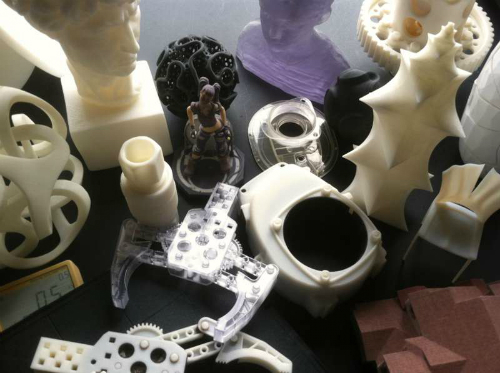The Evolution of 3D Printing Technology
 How is it possible that 3D
printing is already 31 years old? It’s hard to believe that 3D printing
has been around longer than the commercial Internet, digital cellular networks,
and even many readers among us! What started as an adaptation to an
inkjet printer has morphed into a field that reaches across multiple
industries. The following is a brief glimpse into the history of the rapidly
evolving research and developmental milestones of 3D printers. We’ll also
discuss the wide array of products that can be made by using common filaments
such as
ABS & PLA, or more
exotic filaments such as
Polypropylene (PP)
How is it possible that 3D
printing is already 31 years old? It’s hard to believe that 3D printing
has been around longer than the commercial Internet, digital cellular networks,
and even many readers among us! What started as an adaptation to an
inkjet printer has morphed into a field that reaches across multiple
industries. The following is a brief glimpse into the history of the rapidly
evolving research and developmental milestones of 3D printers. We’ll also
discuss the wide array of products that can be made by using common filaments
such as
ABS & PLA, or more
exotic filaments such as
Polypropylene (PP)
The 80’s: Birth and the early history of 3D printing
Charles Hull invented the first prototype 3D printer in 1984. The technique it employed, stereolithography, capitalized on UV laser light shining onto UV-sensitive liquid polymer to trace a preprogramed object on its surface. The UV beam solidified the polymer and printed the programmed piece in layers, guided by its instruction file.
The 90’s: 3D printing learns to crawl
If the 80’s witnessed the birth of 3D printing, the 90’s were its infancy. Charles Hull’s start-up company, 3D Systems, began marketing the first “sterolithographic apparatus machines”. Like the personal computer market whose exciting yet bulky beginnings preceding them, the first stereolithography-based 3D printers came with a hefty price tag, starting at $100,000 according to PCMag. Start-up company DTM followed suit, producing the world’s first selective laser sintering (SLS) machine, which substitutes powder for liquid polymer. In 1999, scientists at Wake Forest Institute for Regenerative Medicine printed a scaffold for the growth of human bladder cells. This synthetic bladder was implanted in a human, opening the door to the 3D organ printing market.
The 2000’s: Democratization and accessibility
The 2000s witnessed a host of 3D printing milestones, providing advancements in medical, manufacturing, and do-it-yourself achievements. The fabrication of the bladder paved the way for many medical milestones, including the construction of a miniature functional kidney, a prosthetic leg, and the first 3D-printed blood vessels. In 2006, machines were now capable of 3D printing with filaments comprised of an ever-expanding number materials, allowing greater complexity, density, and strength in printed objects. Simultaneously, the open source movement was working toward democratizing 3D manufacturing by bringing 3D printers to the masses. The Autodesk publication Line//Shape//Space articulates this development by stating, “By the mid-2000s, the democratization of manufacturing had captured the public’s imagination, as had the idea of mass customization.” RepRap was an initiative of its founder, Adrian Bowyer, to create a printer that can print most of its own components, allowing a user to replicate and share 3D printers with their friends. In 2008, “Darwin” became the first self-replicating printer, empowering individuals to bring their own art and home-spun projects to fruition.
The 2010’s and beyond: Travel, 3D-printed cars… and jewelry!
In 2011 the aviation world was ready to hop on board, revealing the world’s first 3D-printed unmanned aircraft. A recent infographic by Engineering.com highlights this and other 3D printing achievements of the current decade, such as the auto industry’s release of the world’s first 3D-printed prototype car, designed to be affordable and fuel-efficient. Jewelry designers have taken note of the emergence of printers capable of using 14K gold and sterling silver as 3D printing filament materials. 3D printing now has the potential to change the way industry operates, from supply chain to final product. The DIY movement also welcomes the emerging home market for 3D printers, allowing any user to customize and create their vision.
